What Can Spices and Herbs Do?
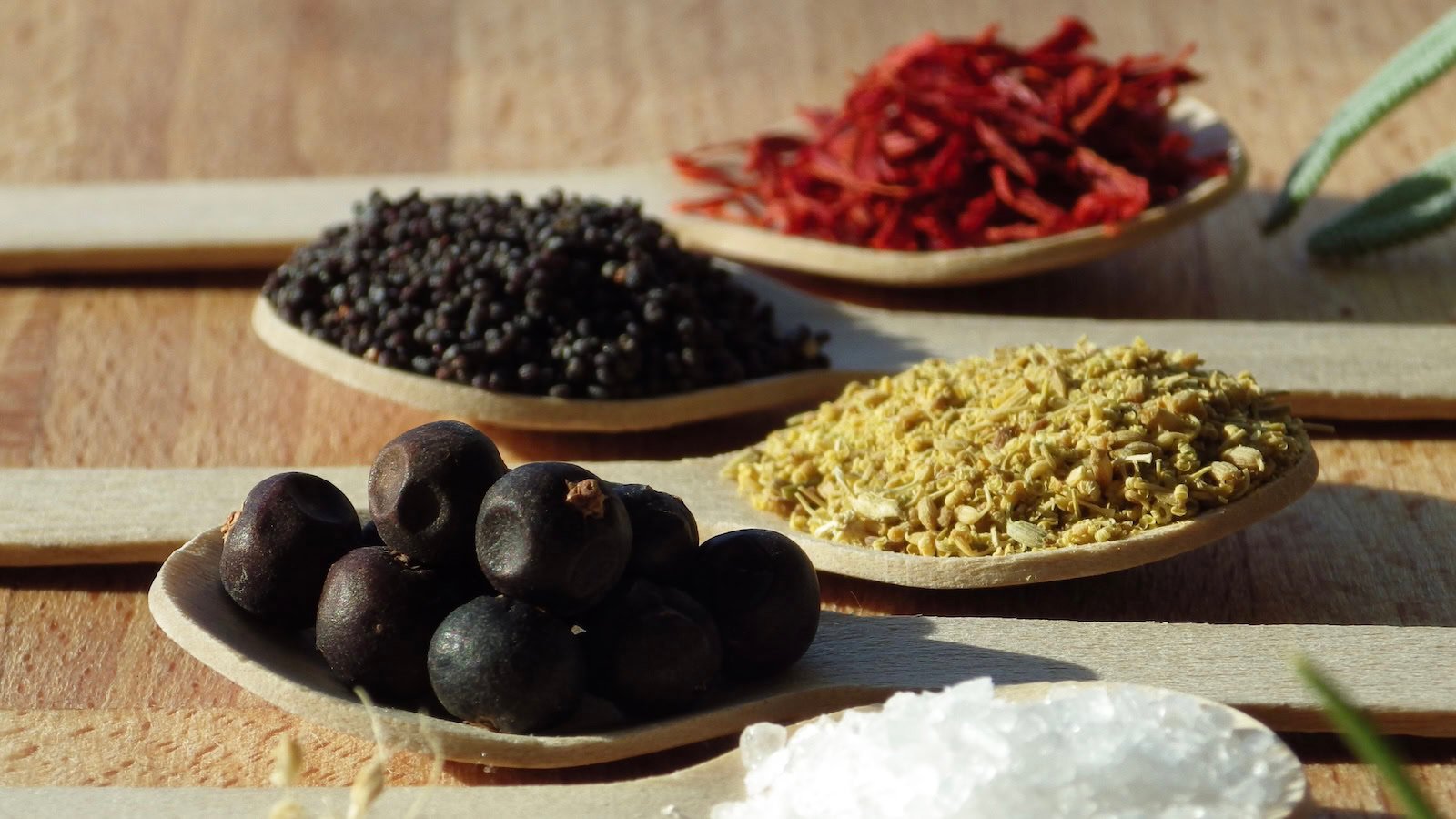
LAST UPDATED: June 15, 2025
READ TIME: 34 minutes
Table of Contents
- To Flavor and Beyond
- Add, Enhance, and Balance Flavor
- Add a Warming, Cooling, or Numbing Effect
- Add and Alter Texture
- Add and Alter Color
- Elevate Visual Appeal and Presentation
- Elevate Beverages
- Encourage Creativity and Personalization
- Transport Us to Faraway Lands
- Engrain and Recall Memories
- Satisfy Hunger
- Preserve Food
- Promote Health
- Embracing the World of Spice
To Flavor and Beyond
Spices and herbs are often underestimated. They can do so much more than add flavor. Once you start experimenting with the myriad of ways they can modify food, the possibilities seem endless. We hope this article helps you see new opportunities for getting creative in the kitchen.
Spices and herbs can...
1. Add, Enhance, and Balance Flavor
Spices and herbs are like paint brushes and every dish is a blank canvas. You are the artist, adding strokes however you choose to turn that canvas into a multi-sensory masterpiece. Understanding of the transformative powers of spices and herbs allows you to make wiser artistic choices.
Let’s start with modifying flavor. Flavor is a curious thing—a complex sensory experience that combines taste with aroma (and texture and temperature to a lesser extent). It is a common misconception that flavor and aroma are completely separate. Aroma is the most critical part of flavor.
So a delicious meal must have the right mixture of aromas and tastes to create favorable flavors. Spices and herbs, with their mighty aromatics and robust tastes, can introduce entirely new flavors, change and amplify the flavors of other ingredients, and bring balance to the dish as a whole. Here’s a closer look at each of these capabilities:
1.1 Add Flavor
Spices and herbs can transform a meal by imparting a range of delicious, comforting, exotic, or unusual flavors. Each addition affects the dining experience differently. In selecting your seasonings, you’re choosing what you want this experience to be.
Spices and herbs can...
- Elevate the Ordinary
- Spices and herbs can make everyday ingredients deep and exciting. A pinch of cumin turns plain roasted vegetables into a lively side dish, emanating warmth. Turmeric adds an earthy, slightly bitter flavor with a rich yellow hue to a simple rice dish. A sprinkle of smoked paprika adds a smoky depth to a basic creamy soup.
- Spark Intrigue
- Spices and herbs can pique curiosity, adding a layer of mystery to a dish. Unique or unexpected flavors keep the palate guessing. Grains of paradise has a captivating profile—both peppery and citrusy, with hints of ginger and cardamom. Its complexity leaves diners wondering where the flavors are coming from. Saffron offers a mysterious floral, leathery, and slightly metallic aroma with an intriguing earthy, bittersweet flavor. Infuse these qualities into rice, soups, and stews to leave a lasting impression.
- Embolden a Dish
- Spices and herbs can add intensity to a dish, transforming it from mild and forgettable to wild and memorable. If you want to make a statement, spices with bold, pungent, or assertive qualities can create more impact. A generous dose of chili powder can turn a mild stew into a fiery feast that lights up your senses. Ginger can bring a pungent, zesty heat to stir-fries, marinades, and desserts.
- Brighten a Dish
- Spices and herbs can add a vibrant freshness or acidity. Sprinkling freshly chopped cilantro into a hearty bowl of black bean soup instantly adds a delightful burst of fresh green notes. Coriander, the seeds of the same plant, offers a citrusy, slightly sweet flavor with hints of spice, perfect for brightening salsas, curries, and rubs.
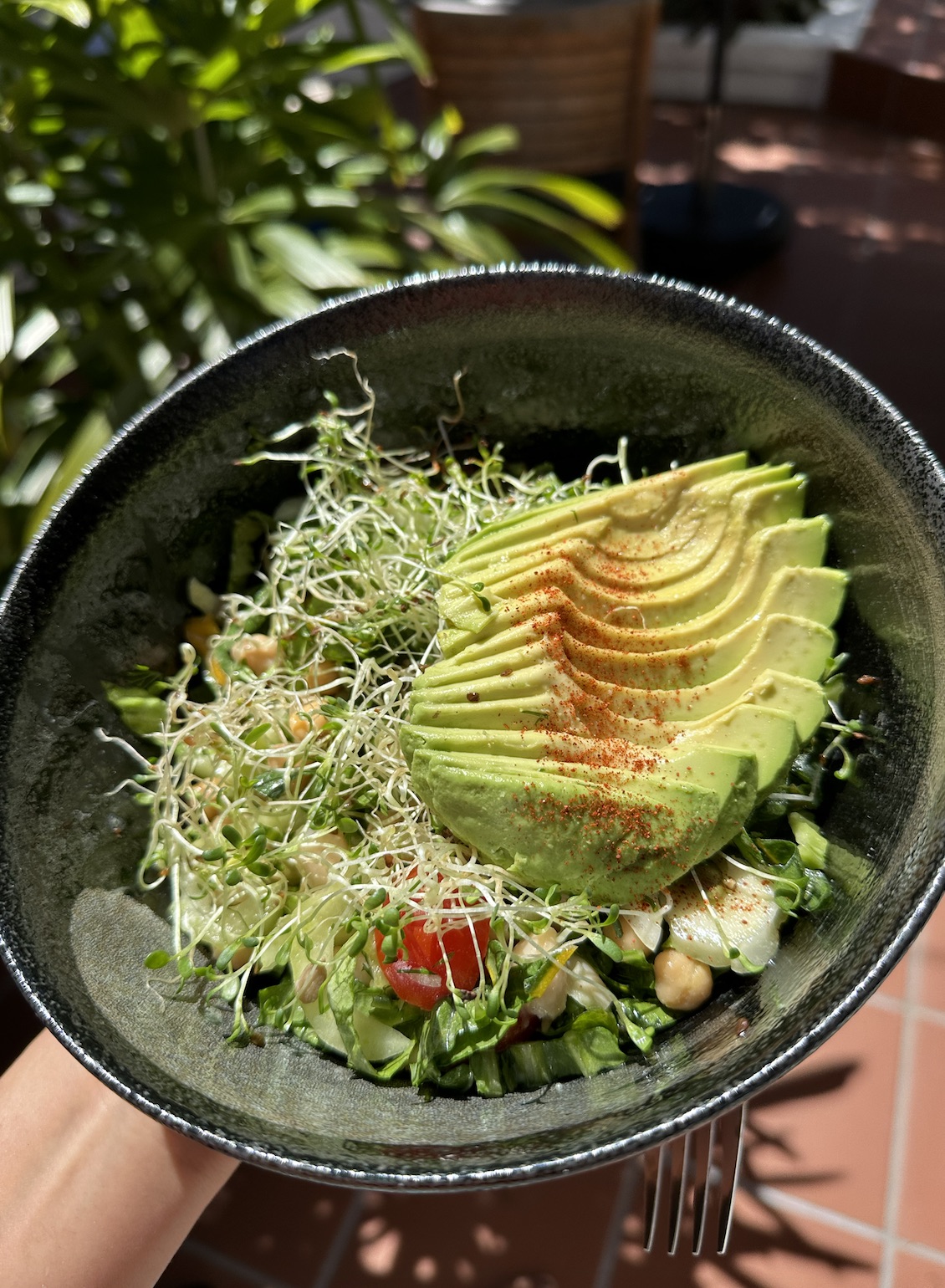
- Create Layers of Complexity
- Spices and herbs can achieve a depth and nuance that goes far beyond a single, dominant taste. Combining complementary or contrasting spices and herbs builds a multi-dimensional profile. Each component contributes to the whole, even if only subtly detected.
1.2 Enhance Flavor
Spices and herbs don't just add new dimensions to the flavor profile, they can also amplify and alter existing flavors. They help unleash the full potential of each ingredient and elevate a dish in its entirety.
Spices and herbs can...
- Deepen Richness
- Spices and herbs can enhance the complexity and intensity of rich flavors. Star anise pods infuse braised meats, soups, and stews with a warm, licorice-like flavor that enriches everything else in the liquid. Nutmeg has the unusual ability to bring out the richness of dairy-based sauces and desserts. It scientifically makes buttery things seem more buttery. This is due to the compound myristicin, which has subtle psychoactive properties that enhance our perception of fatty flavors. Saffron also deepens the richness of savory meats and rice dishes like risotto or paella by adding an immense complexity—over 150 aroma and flavor compounds. The resulting interplay of sensory and chemical interactions amplifies the flavors already present and even creates new ones throughout the cooking process.
- Accentuate Freshness
- Spices and herbs can highlight the natural vibrancy and brightness of certain ingredients, often by adding a complementary layer of zesty, herbal, or citrusy notes. This can make a dish feel lighter and more invigorating. A sprinkle of a fresh herb like basil or mint, or a squeeze of a lime or lemon, can make the crisp freshness of a salad or salsa much more pronounced and enjoyable.
- Highlight Sweetness
- Spices and herbs can accentuate the natural sugars present in a dish, making the sensation of sweetness more noticeable. A pinch of cinnamon can make a fruit salad more luscious by elevating the sweetness of the fruit. A few drops of vanilla extract in desserts and baked goods call more attention to their sweet notes with its comforting aroma. A squeeze of lemon juice and a touch of fresh dill can enliven a piece of grilled fish by elevating its natural sweetness.
- Unleash Hidden Depth
- Spices and herbs can unlock subtle flavors that might be dormant in a dish. A blend of cumin, coriander, and chili powder can awaken the hidden complexity of a humble lentil soup. Onion powder is another versatile spice that brings out the latent flavors within stews and sauces. Just a few grinds of quality peppercorns can bring out the flavors of almost any food, while a single bay leaf simmered in a pot will impart a subtle herbal note that elevates the entire dish.
- Catalyze Reactions
- Spices and herbs can accelerate browning reactions and intensify the resulting flavors. For example, when searing a steak, the surface sugars caramelize under high heat, forming a flavorful crust. Simultaneously, the Maillard reaction occurs between the meat's amino acids and sugars, generating new complex savory flavors within. Spices like black pepper, cumin, or coriander can be added to the steak before searing, acting as catalysts for both caramelization and the Maillard reaction. Similarly, sprinkling fennel seeds on vegetables before roasting will promote caramelization on the surface and help the vegetables' natural sugars to develop deeper savory notes as they undergo the Maillard reaction.
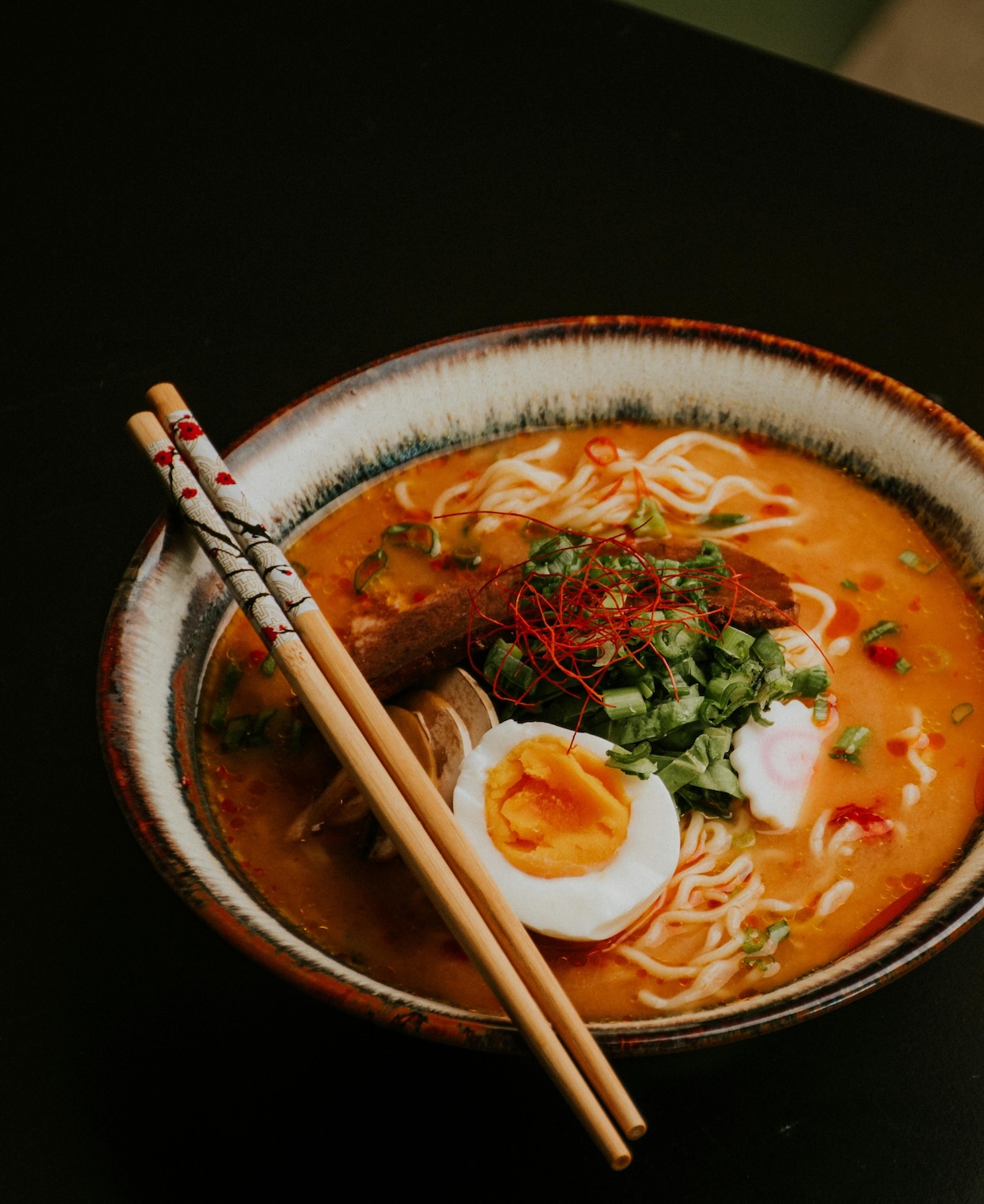
- Awaken Umami
- Spices and herbs can enhance the savory, meaty, slightly sweet, and deeply satisfying taste known as umami. Umami is derived primarily from glutamate, an amino acid that occurs naturally in many foods, including meat, seafood, mushrooms, tomatoes, and aged cheeses. Umami compounds can also be created through cooking or fermentation processes, resulting in the rich flavors found in soy sauce, miso paste, and cured meats. Some spices and herbs naturally boost umami, either by directly containing glutamates (konbu, bonito flakes, msg), interacting with other ingredients to release them (onion), or increasing our perception of them (wasabi).
- Konbu, or dried kelp, and bonito flakes are the key ingredients in dashi broth, renowned for its umami-rich flavor. Adding a strip of konbu to soups or stews significantly enhances their savory notes, making them all the more crave-worthy. MSG (monosodium glutamate) is a flavor enhancer that activates our taste receptors. Research suggests it may neurologically enhance our perception of savory flavors (similar to nutmeg’s buttery effect). MSG also stimulates saliva production, which helps distribute chemical compounds more effectively throughout the mouth, heightening and lengthening the flavor experience. Additionally, cooking onions releases sulfurous compounds that combine with other ingredients' amino acids to form new umami molecules. This is why caramelized onions go so well with meaty dishes. Lastly, wasabi is served with sashimi and wagyu in part because it resets our taste buds, making them more sensitive to new tastes. Wasabi also creates a flavor contrast that accentuates these tastes further, so we perceive the umami of fish and meat more intensely than in its absence.
1.3 Balance Flavor
Spices and herbs can combine in countless ways to balance sweet, sour, salty, bitter, and umami flavors. Every dish is an orchestra. Each spice and herb has its own flavors, just as each instrument has its own sound. Only when they come together in the right proportions and combinations do they produce a symphony, each note playing off the others. By understanding the individual characteristics of different spices and herbs, as well as how they interact with each other and the food itself, you can create harmonious flavor profiles that are complex and nuanced, yet cohesive and satisfying.
Spices and herbs can...
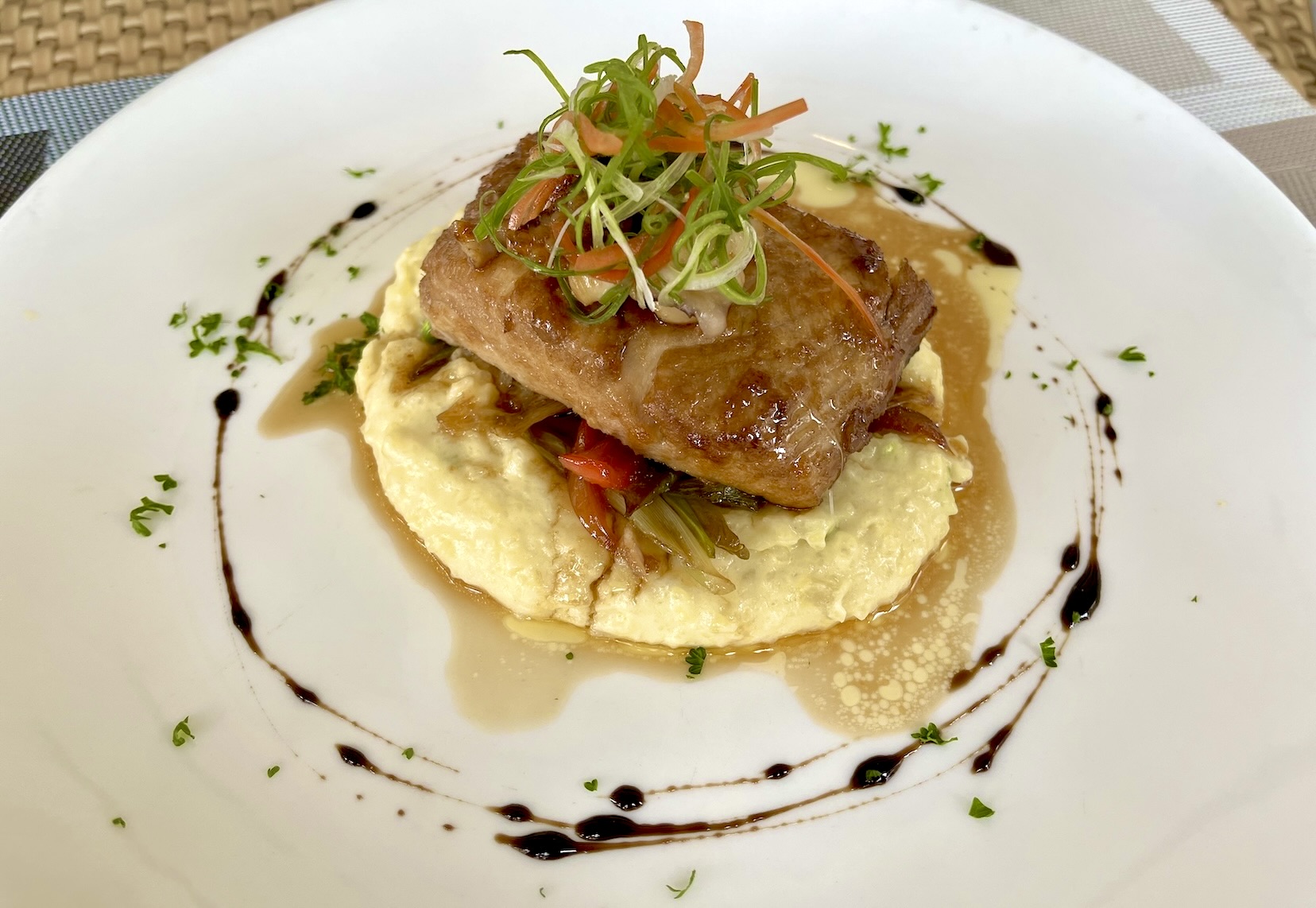
- Balance Sweet and Savory
- Spices and herbs can counterbalance overly sweet or fatty elements, resulting in a well-rounded profile. A pinch of cinnamon in a hearty meat dish lightens the richness while complimenting it with a subtle sweetness. In desserts, a pinch of quality sea salt like Maldon or fleur de sel beautifully counteracts excessive sweetness.
- Temper Heat
- Spices and herbs can cool the intensity of spicy ingredients. A sprinkle of mint can tame the fiery heat of a chili pepper, while a bit of sugar can mellow out the sharp bite of horseradish or mustard, making them more palatable without sacrificing flavor.
- Cut Through Richness
- Spices and herbs can counteract the fatty or dense qualities of a dish with bright, acidic, or pungent flavors that prevent it from feeling too heavy or monotonous. A squeeze of lemon juice or a touch of lime zest with a pinch of ginger does this well. Parsley is another adaptable herb that can balance richness with its fresh notes.
- Soften Bitterness
- Round Out Acidity
- Spices and herbs can balance sharp and sour flavors with sweet, earthy, or savory notes. By adding a subtle depth to acidic dishes, you can enhance their overall flavor without masking the desired tartness. For example, a pinch of ground cloves can neutralize excess acidity in a tomato sauce.
- Mask Unpleasant Odors or Flavors
- Spices and herbs can neutralize certain undesirable traits of a dish with their powerful aromatics. Fish, game, or organ meats sometimes carry unappetizing scents. Deploying strong-smelling spices overpowers these odors, making the dish more enjoyable. In Southeast Asian cooking, fish sauce is often balanced with lime juice, chili peppers, and herbs.
2. Add a Warming, Cooling, or Numbing Effect
Some spices and herbs possess a remarkable ability to influence our perceived sensation of heat or coolness in food, without actually changing its temperature. Heat and coolness preferences vary widely across cultures and people. Some love fiery dishes and others can’t stand them. What feels refreshing to one person might be an inferno to another. Sensitivity and preference are influenced by factors like genetics, culture, upbringing, and personal experience. Even the context within a single dish can change someone’s appreciation for heat or coolness. Learning about the warming and cooling properties of spices and herbs can help you create dishes that are tailored to specific seasons, climates, cultures, and individual tastes.
Spices and herbs can...
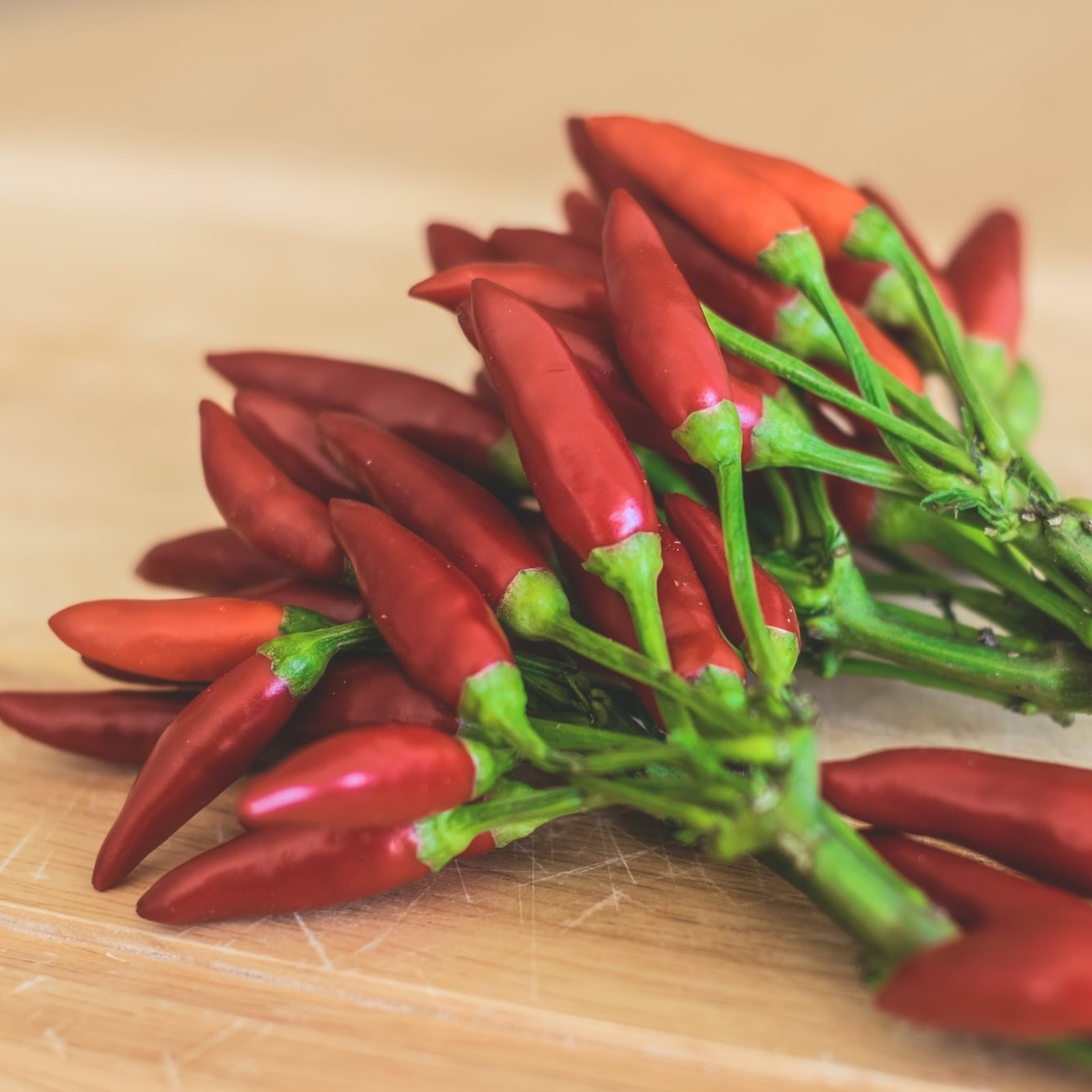
- Add a Warming Effect
- The undisputed king of heat is capsaicin in chili peppers. It binds to receptors in our mouth and throat that are responsible for sensing heat and pain, tricking them into thinking there's actual heat. The intensity of this burning sensation differs by pepper due to varying concentrations of capsaicinoids (measured in Scoville heat units). Peppers with a high SHU can induce sweating and even tears. In the tropics, where the spiciest spices evolved, this sweating phenomenon is welcome as it helps cool the body down.
- Other warming spices include ginger, black pepper, and mustard seed. The compound gingerol in ginger adds a warming, tingling sensation in the mouth and throat, different from the fiery heat of capsaicin. Piperine in black peppercorns creates warmth on the tongue. To varying degrees and with slightly different mechanisms, capsaicin, gingerol and piperine have all been shown to increase body temperature and metabolism. Allyl isothiocyanate in mustard seed is a bit different. It offers a sharp, pungent heat, but its warming effect is not as pronounced or long-lasting as the others because it interacts with our heat receptors in different ways.
- Although less physiologically heat-inducing, other spices warm dishes in a subtler way. In colder climates, these spices help increase our perception of body heat psychologically. Cinnamon, nutmeg, allspice, and cloves evoke a sense of warmth with their sweet, spicy, and woody aromas, often associated with comforting winter dishes and drinks. They give us a kind of olfactory warmth. Cumin, coriander, and turmeric, with their earthy and pungent notes, also create a feeling of warmth and are commonly used in hearty stews and curries.
- Add a Cooling Effect
- Perhaps the most classic cooling agent is menthol in mint. This compound activates receptors in the mouth and throat, creating a perception of coolness even at room temperature. It's particularly prominent in peppermint versus spearmint due to its much higher menthol content (40-60% vs. 0.5%). Similar to menthol but milder, cineole in bay leaves and cardamom and eugenol in allspice and cloves also create cooling sensations in the mouth and throat. These compounds are often used in cough drops and candies for this reason. Anethole in fennel and anise offers a subtler cooling effect. Dill, cilantro, and parsley, with their bright and herbaceous flavors, offer a refreshing counterpoint against spicy ingredients. The acidic notes of lemon zest and lime juice can also create a cooling effect by stimulating salivation and cutting through rich flavors. Some herbs like lavender and chamomile, though not inherently "cooling," can evoke a sensation of refreshment due to their delicate aromas.
- Add a Numbing Effect
- The Chinese Sichuan pepper and the Japanese sanshō pepper are well known for their unique flavor profiles, combining citrusy notes with a subtle peppery heat. Their most distinctive characteristic, though, is their numbing, tingling sensation, caused by a compound called sanshool. This numbing effect is often described as a "buzzing" or "electric" sensation on the tongue and lips. Sanshool is also found in their close relative, the West African pepper called uzazi. The numbing effect of uzazi tends to be even more intense.
3. Add and Alter Texture
Beyond their contributions to flavor, spices and herbs can play a surprising role in transforming the texture of a dish. Thus, they have influence over yet another critical component to the dining experience—mouthfeel and consistency.
Spices and herbs can...
- Add a Crunch
- Toasted poppy and sesame seeds can introduce a delightful crunch, whether they’re sprinkled on top of bagels, breads, and pastries or used to coat chicken, fish, or vegetables. Crushed red pepper or fennel seeds offer a welcome contrast to otherwise smooth dishes. A spice rub of turmeric, cumin, paprika, cayenne pepper, and chili powder not only adds a nice color to your grilled chicken, but also gives the skin a crispy texture, almost like a crust.
- Smooth It Out
- Ground spices like cinnamon, nutmeg, coriander, and cardamom can be incorporated into sauces, custards, and desserts to create a velvety texture that elevates the mouthfeel.
- Thicken Sauces and Stews
- Adding ground tamarind seeds and soaked, blended fenugreek seeds during the cooking process will thicken sauces and stews, creating a more substantial consistency. Mastic, a resinous spice, is another effective natural thickener that imparts a subtle cedar-like taste with a hint of bitterness.
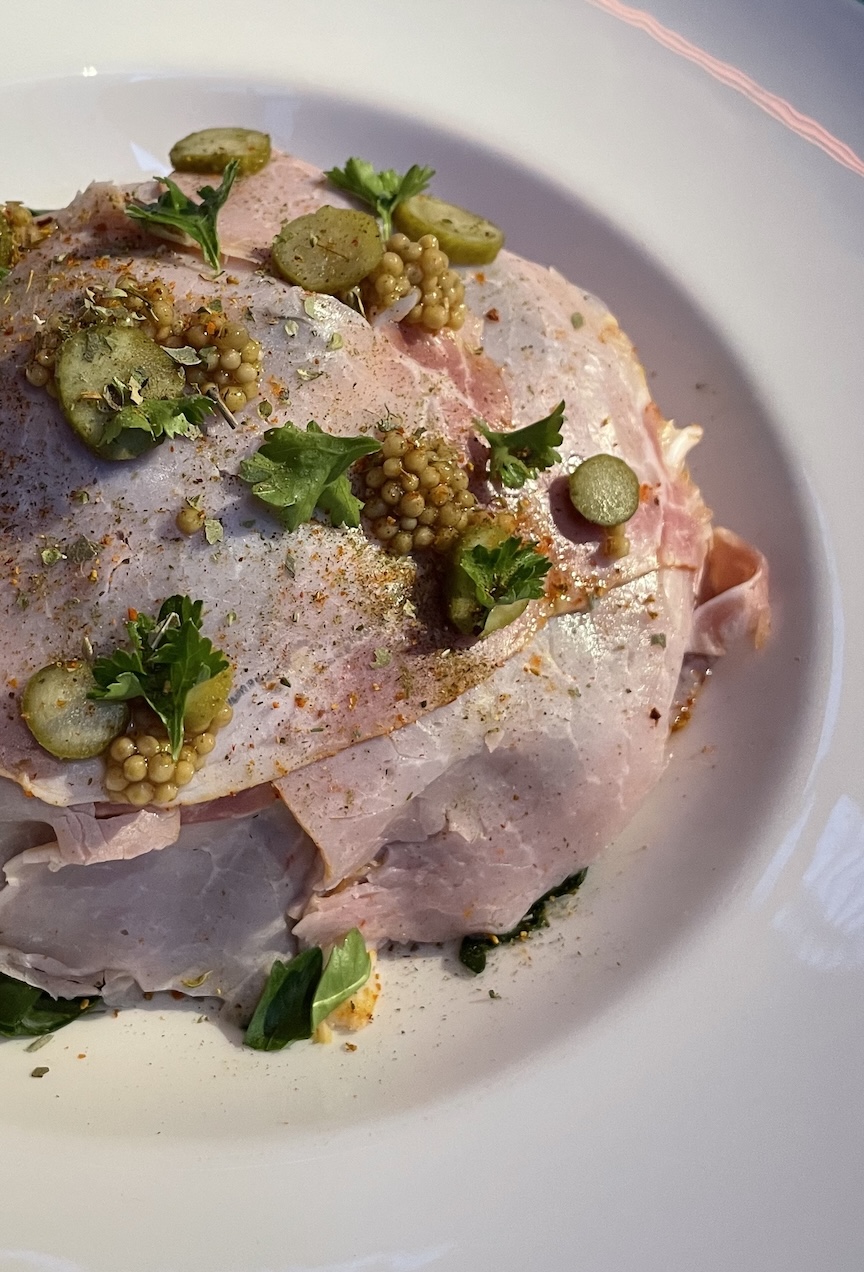
4. Add and Alter Color
Spices and herbs are nature's palette, imbuing dishes with vibrant hues and subtle undertones that tantalize the eyes as much as the taste buds.
Spices and herbs can...
- Evoke Warmth and Joy
- Turmeric, with its signature yellow-orange hue, can transform a simple bowl of rice into a dazzling centerpiece. Its warm color is reminiscent of the joyful summer sun, making it a popular addition to curries, stews, and even smoothies.
- Bring a Touch of Elegance
- Saffron, the most expensive spice in the world, imparts a sense of luxury and refinement with its delicate golden hue. Just a few strands brings a stroke of sophistication to rice dishes, soups, and desserts.
- Create a Fiery Spectacle
- Chili powder, paprika, and cayenne pepper, in their varying shades of red, can ignite a dish with passion. The visual reflects the intensity of their flavor, making them perfect for salsas, chilis, and spicy marinades.
- Bring Us Down to Earth
- Spices like cumin, coriander, and cinnamon, with their earthy brown tones, can ground a dish with a sense of warmth and comfort.
- Create a Tapestry
- You can create a colorful tapestry by combining various spices and herbs on a plate. A Moroccan tagine, for example, might feature a bright blend of turmeric, paprika, and saffron, while an Indian curry could showcase a mix of red chili powder, green cardamom, and brown cumin. Other colorful spices to consider include annatto seeds, which produce a vibrant shade of orange-red, and beetroot powder, a natural dye that can create a range of pink to red hues in baked goods and smoothies.
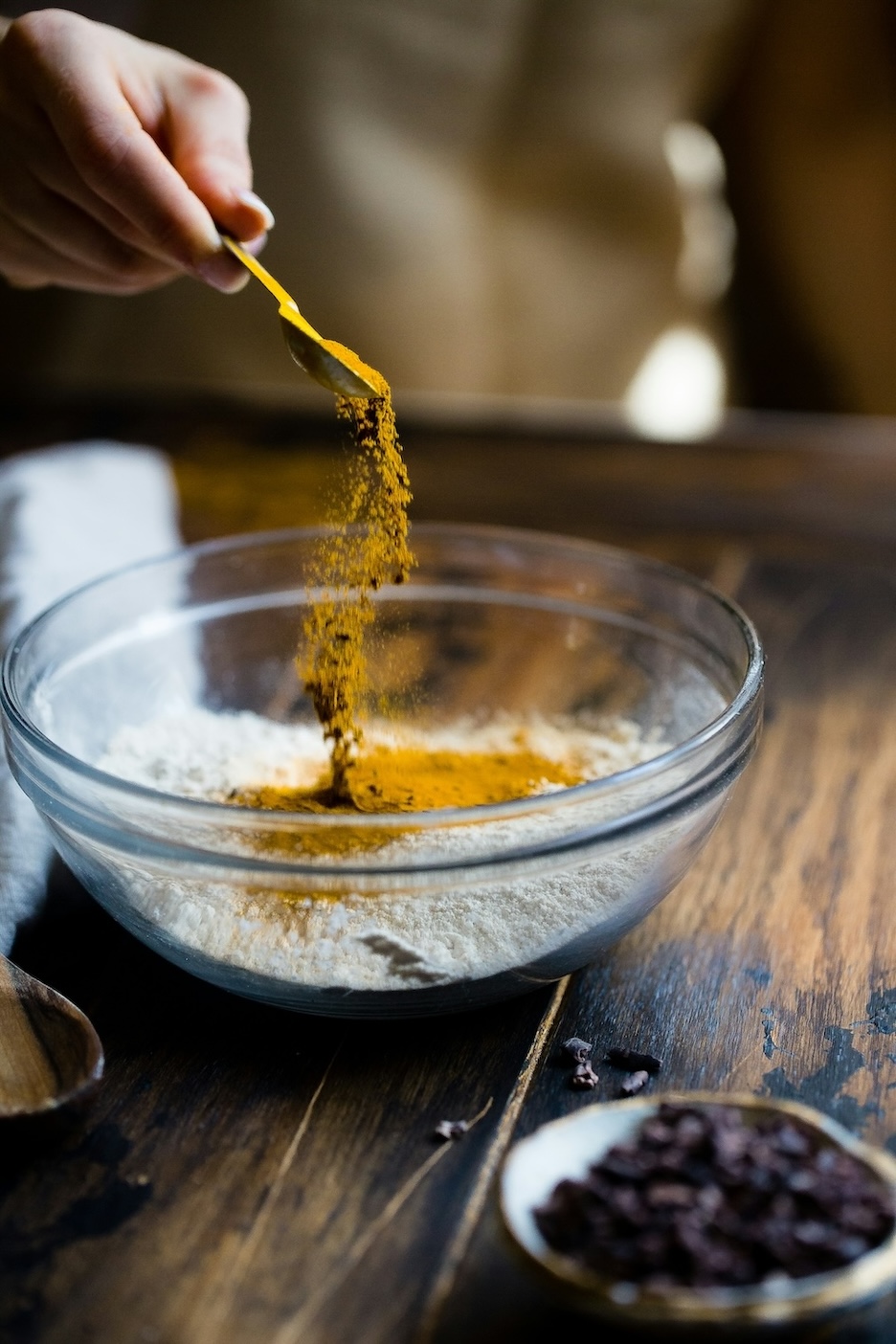
5. Elevate Visual Appeal and Presentation
Building on their ability to impart color, spices and herbs offer a plethora of opportunities to create visually stunning dishes. By incorporating them into your plating and presentation techniques, you give your guests a more memorable experience.
Spices and herbs can...
- Garnish
- Garnish finished dishes with fresh herbs like cilantro, parsley, or basil to add a flair of vivid spring color.
- Decorate
- Whole spices with interesting natural shapes like star anise, cinnamon, cloves, chiles, and cardamom can be used as decorative elements in your plate design. You can get very artistic with this, making intricate patterns and designs.
- A dusting of chili powder on a plate creates a dramatic visual effect, and a drizzle of herb-infused oil adds a swirl of color.
- Infuse Oils and Vinegars
- Bring Food to Life
- A sprinkle of chopped chives on a creamy soup or an elegantly placed sprig of rosemary on a grilled steak instantly elevates the dish's appeal. There are no limits to how creative you can get with this concept, so take some time to have fun with it.
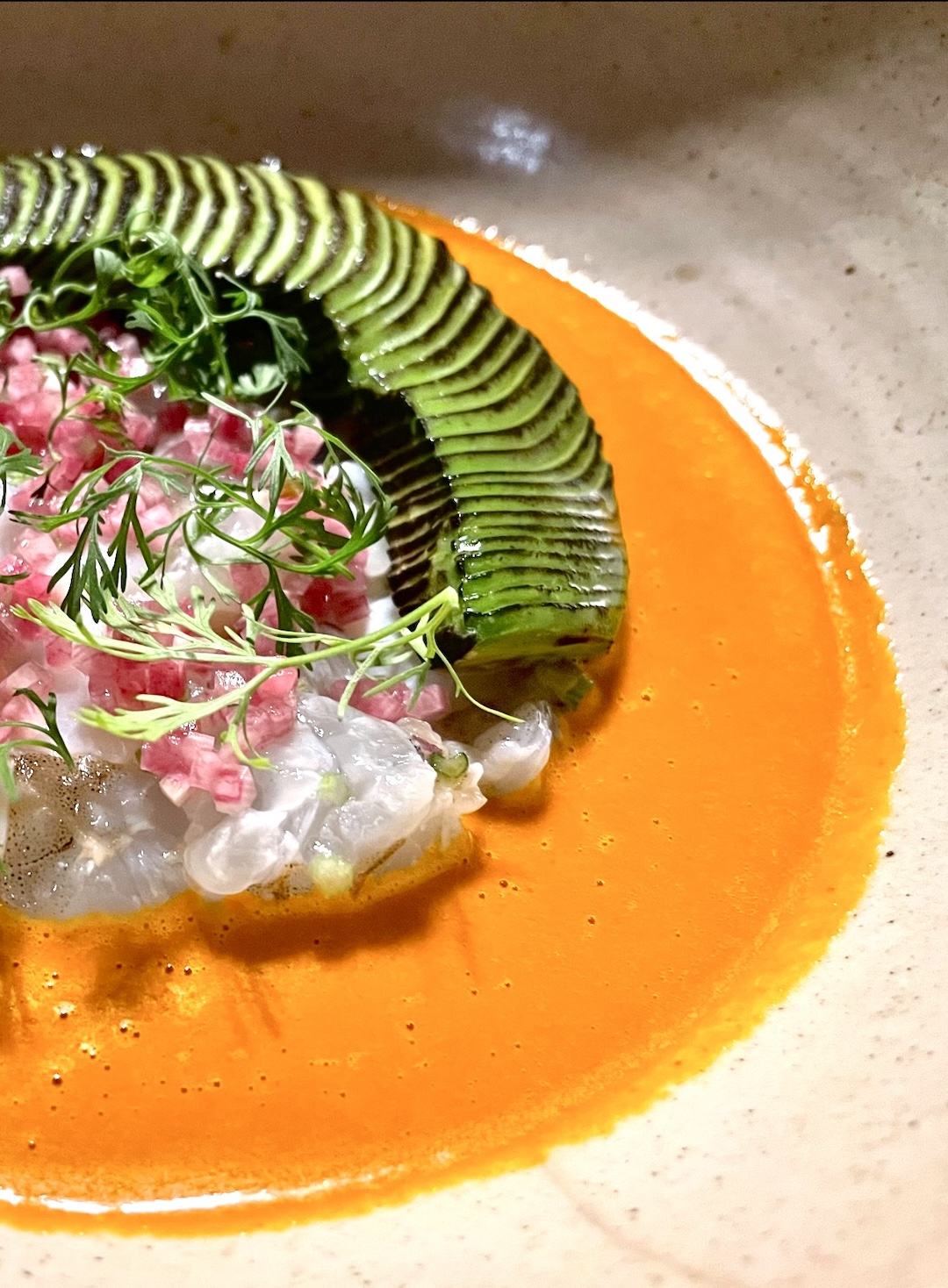
6. Elevate Beverages
The captivating flavors of the spice world are not restricted to food. They can just as readily make beverages extraordinary.
Spices and herbs can...
- Upgrade the Everyday
- A simple cup of coffee becomes a luxurious treat with a sprinkle of Ceylon cinnamon or a dash of nutmeg. Iced tea takes on a refreshing twist with a few muddled mint leaves, a bruised stalk of lemongrass, or a sprig of lavender. Other citrusy herbs like lemon balm and lemon verbena can brighten up lemonade or sparkling water. Spices like ginger, cloves, and star anise bring depth to teas, lattes, and ciders. The chai latte is a classic, blending black tea with cardamom, ginger, cinnamon, cloves, and black pepper.
- Make Beverages Healthier
- Most spices and herbs boast antioxidant, anti-inflammatory, and digestive properties, making them a healthy addition to your daily routine. Turmeric lattes, ginger tea, and cinnamon-infused water are just a few examples of drinks that can relieve nausea, aid digestion, and boost the immune system.
- Spruce Up Cocktails
- Spices and herbs are shaking up the cocktail scene too. Here are just a few examples:
- A pinch of cayenne, serrano, or habanero pepper adds a nice kick to a margarita.
- A few cardamom pods infused in simple syrup lends a exotic depth to a gin and tonic.
- A whole star anise pod can transform a classic old fashioned into a wintery delight.
- Spices and herbs are shaking up the cocktail scene too. Here are just a few examples:
- Infuse Spirits
- Spices are key ingredients in many spirits:
- Grains of paradise is in Bombay Sapphire Gin.
- Nutmeg is in Caribbean spiced rums.
- The French liqueur Chartreuse is made with a secret blend of 130 spices and herbs.
- The German digestif Jägermeister has 56.
- The Italian digestif Fernet-Branca has 27.
- Spices are key ingredients in many spirits:
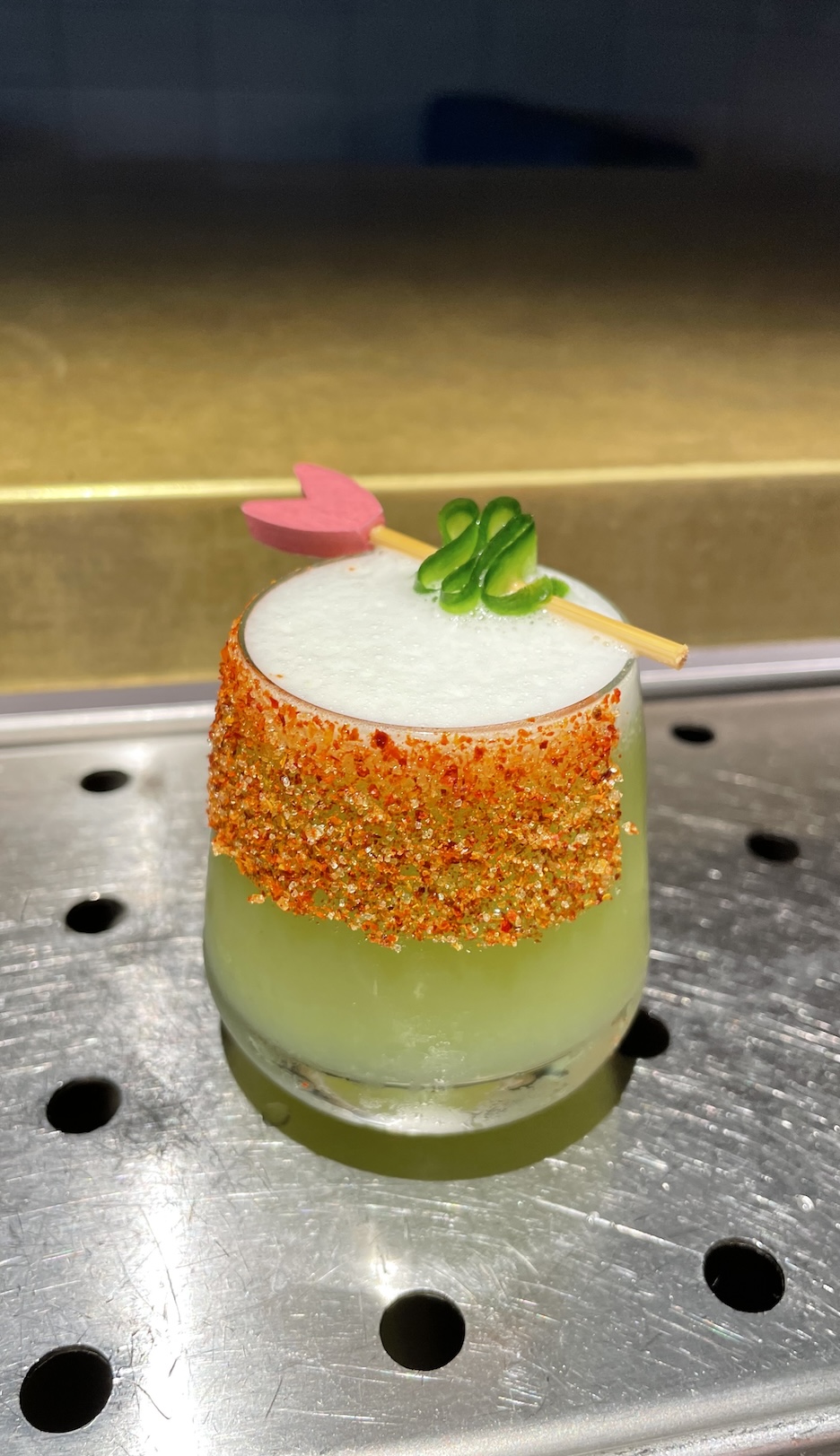
7. Encourage Creativity and Personalization
By now you can clearly see how much opportunity for personalization is at your fingertips. Each spice or herb can be used in many ways, and when we start mixing the complex sensory effects of each one with those of another, or another dozen, and that mixture then blends with the qualities of our ingredients, the possibilities expand exponentially. The world of spice is ripe for exploration. It is the ultimate culinary playground.
Spices and herbs can...
- Inspire Experimentation
- Spices and herbs empower us to break free from the confines of recipes, to mingle with the unknown, and to create dishes that are uniquely ours. There are no rules. Feel free to mix and match, adjust proportions and ratios, and try new combinations to discover your own signature flavors. A pinch of this, a dash of that—the choices are limitless. With their diverse range of flavors, aromas, textures, and colors, spices and herbs encourage us to venture beyond our comfort zones to arrive at something magical.
- Evolve Your Go-Tos
- Even the most basic recipes that you cook regularly can be elevated with a few well-chosen spices. If it’s a staple dish in your home, you have plenty of trials to test out new spice combinations until it becomes new and refreshing.
- Make Cooking Fun
- Spices and herbs add an element of anticipation and excitement to the cooking process. Instead of just going through the same routines, imagine how much fun you can have with dozens of spices on the counter.
- Reflect Culture
- As you’ll see in the next section, spices and herbs are deeply rooted in cultural traditions. By incorporating flavors from your own heritage, you can share your culture with others. By using flavors from other regions, you can share your passion for travel, connection, or the unfamiliar.
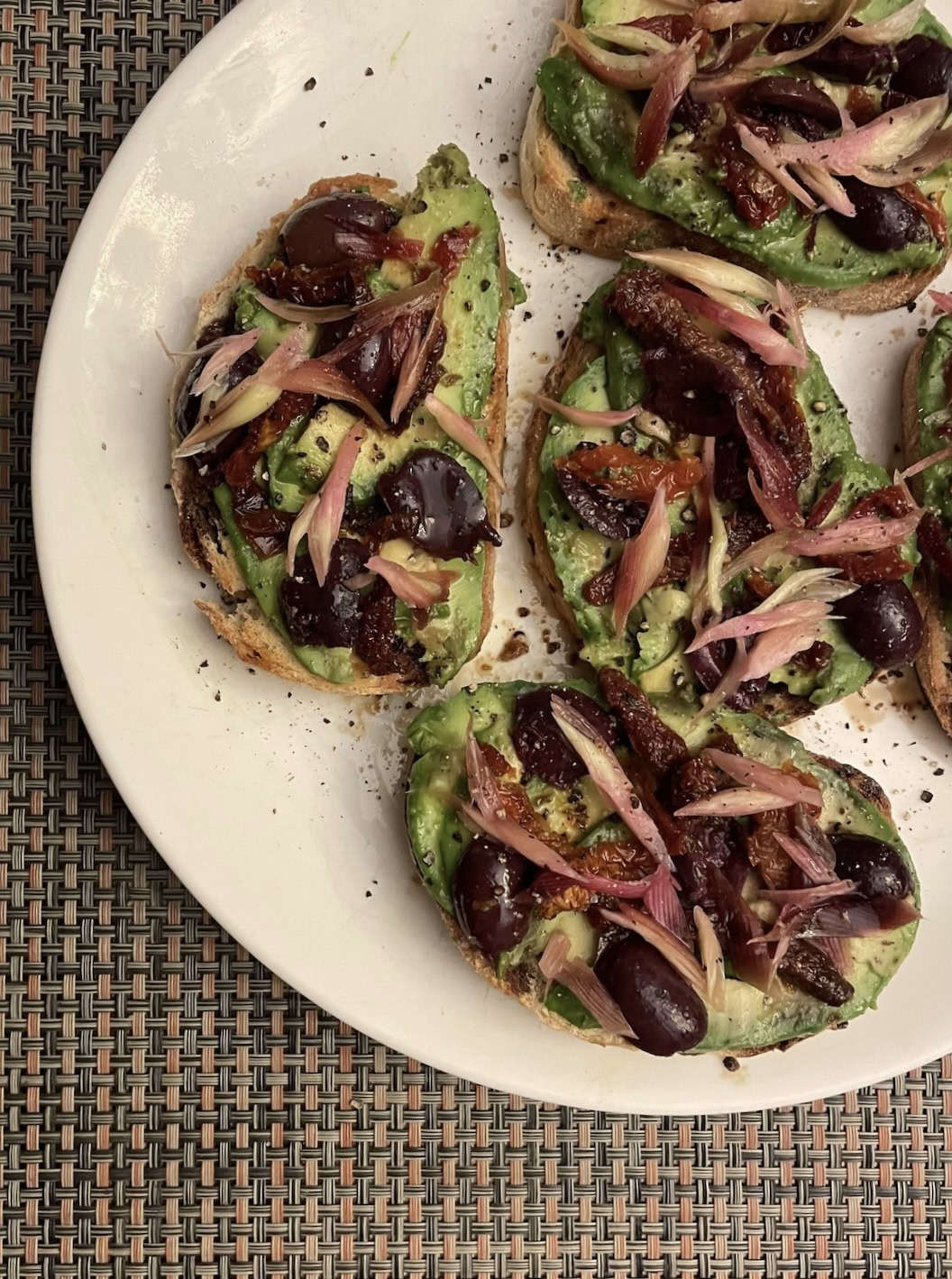
8. Transport Us to Faraway Lands
Spices and herbs are so important to so many cultures around the world because they give culture flavor. Something to taste and smell—a journey of the senses to intimately experience that culture, and to remember it by. They are the essence, holding the soul of centuries of tradition. Thus, they help distinguish one cuisine from another. Of course there are unique techniques, tools, and food ingredients, but often the primary distinguishing factor that the diner tastes is the seasoning.
For example, dak-galbi vs. jerk chicken. Two dishes, both solely featuring chicken as the main ingredient, yet worlds apart in flavor. One is unmistakably Korean and the other exudes the heart of Jamaica. It's the spice that's different. The chicken of dak-galbi is seasoned with gochugaru, gochujang, soy sauce, ginger, garlic, rice wine, and sugar. Jerk chicken is spiced with scotch bonnet peppers, allspice, thyme, scallions, ginger, garlic, brown sugar, and citrus juice. The unique seasoning combination results in two wildly different dishes.
The spices and herbs that are native to a region and the blends that are culturally significant to a people are a major source of pride. Cooks want to express their heritage through them. This is a beautiful thing. When we taste these flavors and smell these aromas, even at home, we are transported to those countries. A sensory vacation, so to speak. Spices and herbs are gateways to our great diversity of cuisines.
Think about how you can leverage this ability in your kitchen. Delve into the cuisine of a culture you find fascinating. Learn about the cultural significance of specific dishes and the spices that bring them to life. Understanding the history and context of a dish deepens your appreciation of its flavors. You can also share the story of a dish and its ingredients with your guests, enriching their dining experience.
It is so important that we pay proper homage to another culture’s traditions. It is also important to encourage creativity. Once you have a grasp of the basic spice profiles of different cuisines, you can start trying your own combinations. You may invent one of your family’s favorite dishes by merging elements from multiple regions. Fusion cuisine is very popular these days, and for good reason. Many glorious combinations can result. But for now, let’s take a look at some of the spices and herbs that epitomize various countries. Below are just a few examples. You could spend a lifetime exploring the flavors of the world.
Spices and herbs can take us to...
- India
- Cumin, coriander, turmeric, cloves, cardamom, fenugreek, and curry leaves bring you to the bustling streets of India, filling your dining room with the aroma of rich curries and fragrant biryanis. A dash of green cardamom in your morning oatmeal gives it a fragrant sweetness reminiscent of Indian desserts.
- Thailand
- Lemongrass, galangal, makrut lime leaf, tamarind, coriander, thai basil, mint, and bird’s eye chili peppers evoke the vibrant night markets of Bangkok with their sweet, sour, spicy, and salty notes.
- Mexico
- Chiles, cumin, oregano, cilantro, garlic, onion, cinnamon, allspice, epazote, cocoa powder, and annatto seeds are some of the key building blocks of Mexican cuisine, bringing the warmth and vibrancy of traditional dishes like tacos, enchiladas, and mole sauces to your table.
- Morocco
- A tagine simmering with cinnamon, ginger, turmeric, saffron, and a hint of sweetness from dried fruits can transport you to the lively souks of Marrakech, with their enticing aromas and exotic flavors.
- Italy
- Italian cuisine is very herbal. Combinations of basil, oregano, thyme, rosemary, garlic, parsley, and olive oil can recreate the essence of Italy, conjuring images of sun-drenched vineyards, rustic trattorias, and pastel villages cascading down to the sea.

9. Engrain and Recall Memories
Perhaps most important to the connection we all seek through food, spices and herbs have the power to engrain and recall memories. The olfactory system, responsible for our sense of smell, is closely linked to the parts of the brain that process emotions and memories. The distinct aromas of spices and herbs can act as powerful triggers, instantly transporting us back to specific moments in our lives when those aromas were present.
For example, as we’ve just seen, different cultures associate different seasonings with comforting home-cooked meals and traditional recipes. Those familiar flavors make special occasions even more special, and can evoke nostalgia, even unintentionally. The smell of cinnamon might surface memories of baking festive treats with grandma, and the scent of allspice may take you back to a Thanksgiving dinner. A hint of nutmeg in a warm beverage could remind you of cozy winter days by the fire, while a bite of ginger might make you visualize a long-forgotten cookie, your favorite from childhood. The fragrance of rosemary might evoke fond memories of a summer barbecue with friends, and a whiff of thyme may refresh the feelings you had at a pivotal romantic dinner.
Furthermore, aromas contain a sort of story within them, even if not tied to your past. They take you to a place lost in time that somehow feels familiar. Our long history of coevolving with aromatic plants has given certain fragrances and flavors an innate sense of emotion. Rosemary is linked to fidelity and remembrance. Chili peppers are vigorous and passionate. Sage is famously associated with wisdom and clarity. Lavender with relaxation. Ginger awakens desire, and cardamom inspires good conversation.
Spices and herbs have the ability to become woven into the fabric of our memories and emotions. Because of this, they can help us intentionally cultivate atmospheres of excitement, comfort, romance, luxury, or celebration. Embrace this power to make your cooking so much more meaningful. You can make cherished moments. You can architect dishes to be associated with special occasions. You can start a tradition—a signature family recipe to be passed down for generations.
10. Satisfy Hunger
Consuming well-seasoned food has been proven to satisfy hunger more quickly than unseasoned food, giving you better control over how much you eat. While spices and herbs are not a significant source of calories or macronutrients, their role in promoting a feeling of fullness can be attributed to the following factors.
Spices and herbs can...
- Slow Eating
- By intensifying and layering flavors, spices and herbs make food more interesting and enjoyable, encouraging us to savor each bite and eat more slowly. When we take our time with meals, it allows our bodies to register fullness signals more effectively, often leading to less food being consumed overall.
- Increase Saliva Production
- Certain spices and herbs, particularly those with pungent or spicy flavors, stimulate saliva production. This not only improves flavor perception and digestion, but also contributes to a feeling of satiety.
- Increase Fiber Intake
- Fiber promotes a feeling of fullness. While not all spices and herbs are high in fiber, some do contribute to your daily intake, like cumin, coriander, wasabi, and fenugreek seeds.
- Delay Gastric Emptying
- Some spices, such as ginger and fennel, have been shown to slow down the rate at which the stomach empties. This can prevent overeating by helping you feel full for longer.
- Reduce Cravings
- The complex flavors of spices and herbs can help to satisfy cravings and reduce the desire for less healthy snacks. For example, a cup of herbal tea with cinnamon and ginger can be a satisfying alternative to a sugary beverage. Cinnamon also helps stabilize blood sugar levels, preventing the spikes and crashes that lead to cravings. Additionally, the capsaicin in chili peppers can temporarily increase metabolism and reduce appetite.

11. Preserve Food
For centuries, spices and herbs have been used as natural preservatives due to their antimicrobial and antioxidant properties. Long before the advent of modern refrigeration, they helped inhibit the growth of bacteria, mold, and other fungi, thus extending the shelf life of food and ensuring its safety. This is due to their own evolution—their chemical composition defends against things that decompose them. It just so happens those are the very things we don’t want in our food or bodies. So the same compounds that repel and kill this common enemy taste and smell great to us. It is a beautiful example of symbiosis.
Spices and herbs have...
- Antimicrobial Properties
- Many spices and herbs contain compounds that can kill or inhibit the growth of microbes, thus slowing spoilage and reducing the risk of foodborne illnesses.
- Cinnamon: Possesses antifungal properties that help prevent the growth of mold on bread and baked goods.
- Oregano: Rich in carvacrol and thymol, compounds with strong antibacterial and antifungal activity.
- Garlic: Contains allicin, a sulfur compound known for its antimicrobial properties.
- Cloves: Contain eugenol, a powerful antimicrobial effective against a wide range of microbes.
- Mustard, Wasabi, and Horseradish: These spices contain various isothiocyanates, extremely potent antimicrobials.
- Many spices and herbs contain compounds that can kill or inhibit the growth of microbes, thus slowing spoilage and reducing the risk of foodborne illnesses.
- Antioxidant Properties
- Many spices and herbs are rich in antioxidants, which protect food from oxidation and rancidity. Oxidation is a chemical reaction that can cause food to spoil, change color, and lose nutritional value. Some examples include:
- Rosemary: Contains rosmarinic and carnosic acid, potent antioxidants.
- Saffron: Rich in antioxidants like safranal and crocin, which also exhibit anti-inflammatory effects.
- Turmeric: Contains curcumin, a powerful antioxidant with anti-inflammatory action.
- Ginger: Contains gingerol, another strong antioxidant with potent anti-inflammatory properties.
- Star Anise: Rich in antioxidants due to the compound anethole and various flavonoids.
- Many spices and herbs are rich in antioxidants, which protect food from oxidation and rancidity. Oxidation is a chemical reaction that can cause food to spoil, change color, and lose nutritional value. Some examples include:
12. Promote Health
Most spices and herbs are nutritional powerhouses offering a plethora of health benefits. One of the keys to proper nutrition, and thus, health, is nutrient density, meaning the ratio of nutrients to calories that we consume. By flavoring our food without adding excess calories, sodium, saturated fat, or sugar (while adding more nutrients), spices and herbs seem to be trying their best to help us enjoy our food while getting healthier in the process. How wonderful!
Beyond their nutritional appeal, spices and herbs also have a long history of use in traditional medicine systems worldwide. Modern science is increasingly validating these age-old applications, revealing a wealth of bioactive compounds that promote health and protect against chronic diseases. Incorporating them into your daily diet is a simple and delicious way to support your overall well-being. In addition to the antioxidant, antimicrobial, anti-inflammatory properties mentioned above, which all aid the human body, here are more health benefits to consider:

12.1 Digestion Aid
Spices and herbs have been used for ages to support healthy digestion. We’re now learning the science behind it.
Spices and herbs can...
- Stimulate Digestion
-
- Ginger: Stimulates the production of saliva and digestive enzymes, helping to break down food more efficiently. It also helps to relax the muscles of the digestive tract, reducing cramping and bloating.
- Fennel: Helps to expel gas and reduce bloating. It also contains compounds that can relax the muscles of the digestive tract, easing discomfort.
- Cumin: Stimulates the production of digestive enzymes and bile, aiding in the digestion of fats and proteins. It also has anti-inflammatory properties that can soothe irritated digestive tissues.
- Coriander: Improves digestion by promoting the smooth movement of food through the intestines. It does this through its carminative (gas-relieving) properties and its ability to relax digestive muscles.
- Black Pepper: May increase the secretion of digestive enzymes like amylase, lipase, and proteases in the pancreas. These enzymes are essential for breaking down carbohydrates, fats, and proteins, respectively, making them crucial for proper digestion and nutrient absorption.
- Soothe Inflammation
- Turmeric: Contains curcumin, a compound with potent anti-inflammatory properties that can help soothe inflammation in the digestive tract.
- Promote Gut Health
- All of the spices and herbs with antioxidant and antimicrobial compounds, of which there are many, help balance gut flora by promoting the growth of beneficial bacteria and reducing the growth of harmful ones.
12.2 Immune Booster
Spices and herbs can support immune function by enhancing the activity of immune cells and protecting against microbial infections.
- Garlic: Contains compounds that can stimulate the immune system.
- Ginger: Has antiviral and antibacterial properties that can help prevent and fight off illness.
- Cinnamon: Contains cinnamaldehyde, a compound with antimicrobial and anti-inflammatory properties that can help boost the immune system. It also has antioxidant effects that can protect cells from damage.
- Cardamom: Contains compounds that help to enhance the activity of natural killer (NK) cells, which play a crucial role in the body’s first line of defense against infection and disease. It also has antioxidant and anti-inflammatory properties that support overall immune function.
12.3 Aromatherapy and Mood Enhancement
The essential oils derived from many spices and herbs are used in aromatherapy, a holistic healing practice that utilizes fragrances to promote physical and emotional well-being in the following ways:
- Stress Reduction: Cinnamon, cardamom, and bergamot have calming properties that relieve stress and anxiety.
- Mood Enhancement: Saffron, vanilla, and citrus scents like orange and lemon can uplift mood.
- Improved Sleep: Lavender, chamomile, nutmeg, lemon-balm, and passionflower are often used to promote relaxation and improve sleep quality.
12.4 Improved Sexual Function and Desire
Spices and herbs have been used as aphrodisiacs by many cultures for a very long time. While the extent to which modern science substantiates these effects is still limited, early research is promising for a few spices:
- Saffron: Several studies conclude that saffron may improve sexual function in both men and women by increasing blood flow and enhancing mood. It was found to be particularly effective in those experiencing sexual dysfunction related to psychological factors or the side effects of antidepressant medications.
- Fenugreek: Clinical trials have shown that fenugreek extracts can increase male and female libido and testosterone levels in men.
- Ginger: Some studies suggest ginger may improve sex drive and performance by increasing blood flow and stimulating the nervous system.
- Nutmeg: While not as well-researched as the previous three, nutmeg has demonstrated mild erectile support in animal studies.
12.5 Other Potential Health Benefits
While more research is needed to fully understand the health effects of spices and herbs, they are actively being studied for a wide range of other potential benefits, including:
- Heart Health: Garlic, ginger, and tamarind may help to lower cholesterol and blood pressure, reducing the risk of heart disease.
- Brain Health: Turmeric, saffron, wasabi, nutmeg, and rosemary may have neuroprotective effects and improve cognitive function.
- Cancer Prevention: Turmeric, saffron, and ginger have been shown to have anticancer properties in laboratory studies.
- Blood Sugar Control: Cinnamon, allspice, and fenugreek may help to improve insulin sensitivity and lower blood sugar levels in people with diabetes.
Embracing the World of Spice
We hope this article helped broaden your perspective on the many powers of spices and herbs. As humanity continues to investigate and rediscover their versatility, we’re sure to uncover even more dimensions to their usefulness. Let’s embrace the full potential of these little wonders. In the process, we will deepen our connection with the natural world, nurture our wellness, and unlock a whole new world of culinary possibilities.

